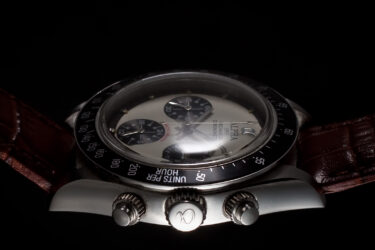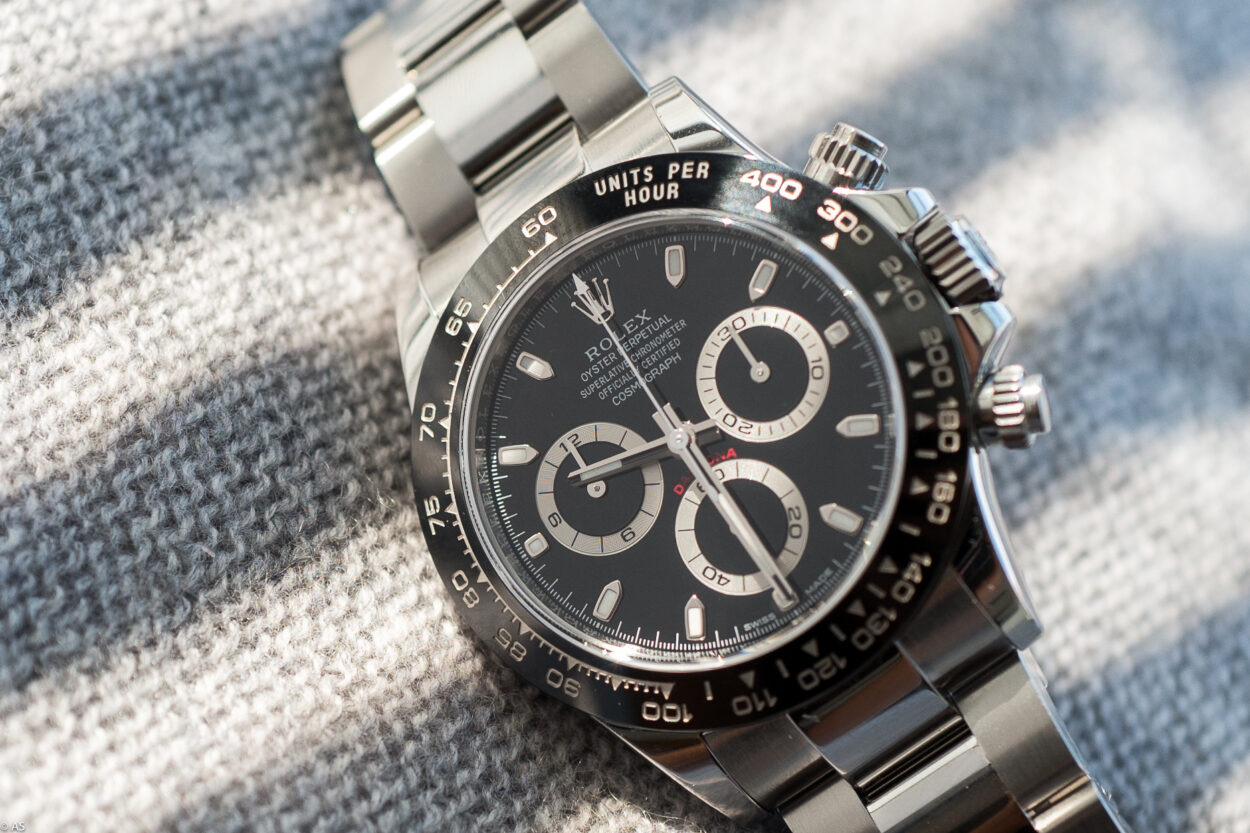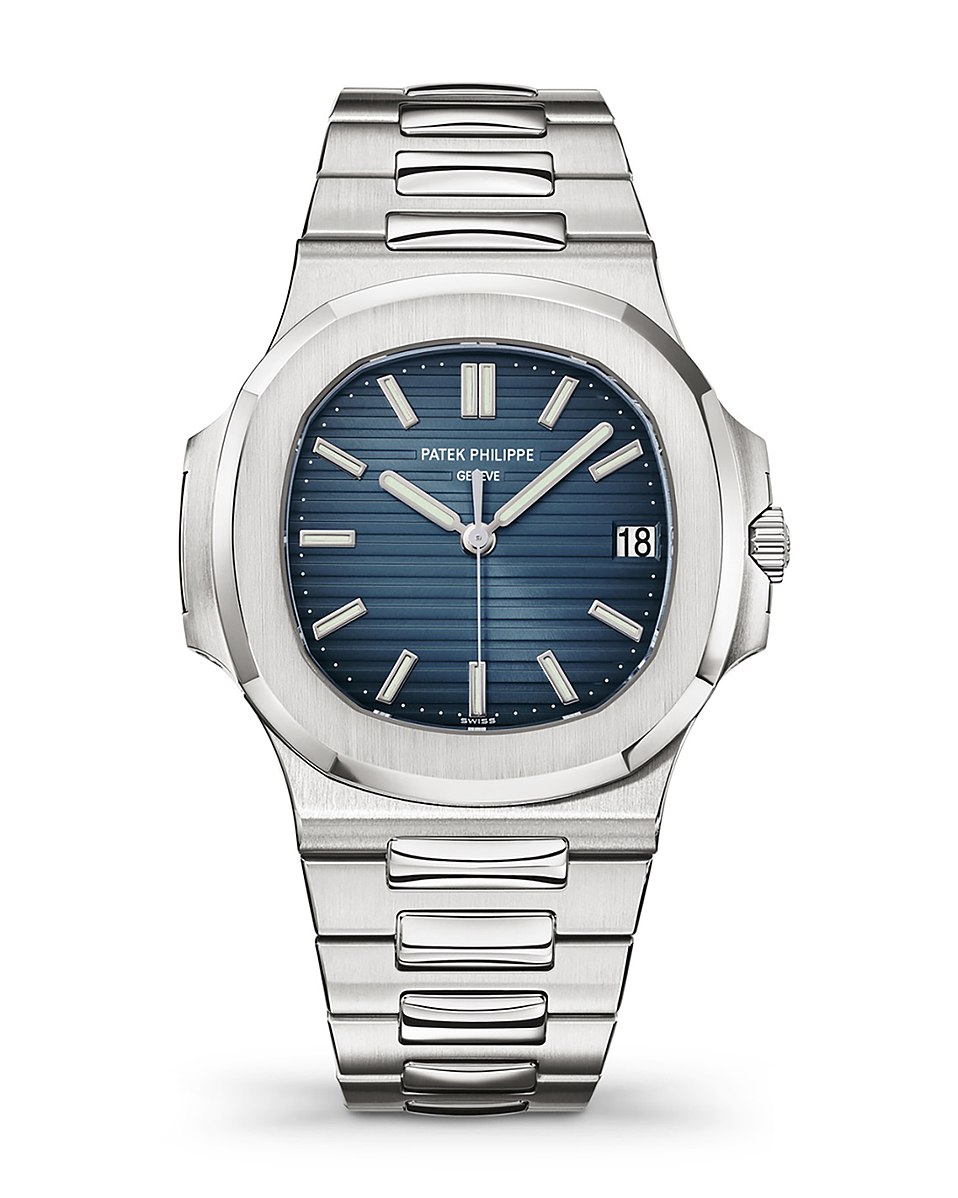Vintage watches are, to most, enigmatic and endlessly complex. However, learning references, understanding nuances and developing an understanding of particular elements can open you up to a whole new world of fascination.
When we talk about nuances there is one which provides a great deal of intrigue amongst watch collectors, the Sigma dial. What makes it all the more complicated is that they are often misinterpreted. The fact that they are unusual and misunderstood, certainly makes the Sigma dial, an enigma.
Sigma Dial: Definition
A sigma dial, to give a quick upshot, is a dial that is marked with the Greek Letter sigma at the bottom of the dial, below the 6 o’clock hour marker.
They were found on Rolex watches, even Patek Philippe, Vacheron Constantin and IWC. But why are they so important and what was the reason behind these dials? Well, that’s the enigma.
Where does the confusion stem from?
Well, many thought that the Sigma dial was, in fact, a compulsory addition to a dial enforced in Switzerland during the 1970s.
Another element that causes confusion is the production run of these dials. Sigma dials were produced for different lengths of time, depending on the brand. So that makes understanding these dials all the more complicated.
So how can we clear up the myth?
It’s now been proven that the Sigma dial was completely discretional and in fact, was the choice of the watchmaker themselves.
Members of the organisation APRIOR (Rolex, Patek Philippe and Vacheron Constantin to name a few) were able to display, on their dials, the two Greek symbols at 6 o’clock. APRIOR, which stands for Association pour la Promotion Industrielle de l’Or, translates in English to the Association for the Industrial Promotion of Gold.
The sigma dials were used to signify the use of gold for the hour markers and the hands-on certain watches. Some experts argue that this was a direct response to the quartz crisis, in an attempt to prove the legitimacy of Swiss watches, in the face of the rise in quartz watches.
Don’t forget that at the time watches weren’t nearly as valuable as they are today, so by adding gold to them, watchmakers were increasing the value of the watches, even if the gold value was minimal.
Regardless, these dials weren’t produced for an extensive period of time, and only a select few brands actually implemented these dials.
Sigma Dial Production Period
Another enigmatic element of the Sigma dial is the production period. Truthfully, nobody knows exactly, but it is estimated that the early 1970s was when Rolex first used Sigma dials.
Brands such as Vacheron Constantin have been seen to use the dial until 2000. So, we can estimate the production period to be between 1970 and 2000. The trademark for APRIOR came first in 1973. However, there are some Rolex dials that predate that, dating to 1970/71.
We also know that these dials are totally genuine. If you see a watch dated before 1970 with a Sigma dial, our best guess is that the dial isn’t genuine. It surely can’t get more complicated than that, right?
Well, Vacheron Constantin was seen using these dials up until the early 90s, but much like the situation with Rolex, the dates aren’t exact. There have been watches with genuine Sigma dials dating up to the year 2000. So, although we have a rough understanding of the production period, we still don’t know exactly.
What makes the Sigma dial so collectable?
Of course, there are rarer dials and rarer watches, but in the grand scheme of things, the Sigma dial is not a common nuance.
When we are talking about Rolex, the production period was between 1970 and 1979, as far as we know, and therefore production was reasonably limited. Some rare Daytonas can be seen with a Sigma dial, as can many Datejust.
One of the most intriguing Patek Philippe Sigma dials is the 3700. Patek Philippe, alongside Vacheron Constantin, used Sigma Dials well into the 1990s.
The Sigma dial for these brands represented a period where they were trying to prove their worth. It coincides with the quartz crisis and acted as a way for these prominent Swiss brands to show their craftsmanship.
The fact, however, that APRIOR and Sigma dials no longer exist proves that the use of gold doesn’t instantly mean that the watches are better. Instead, these brands moved away from pointing out the use of gold and focused on the craftsmanship itself.
So ultimately, what we see from Sigma dials is the absolute opposite of their original objective. They initially were designed as a sign of quality, but instead, we see that true quality comes from the craftsmanship of the watch, and less so from the use of gold on the dial. We can see, as a result, how successful the industry is now compared to the 1970s for example.
That said, the Sigma dials hold an important place in watch history. They are dials that represent a time when the Swiss watch industry battled to prove its legitimacy.
Nowadays, Swiss watches still rule the seas. In our modern collecting world, however, Sigma dials are becoming more and more collectable, and rightfully so. It’s a fascinating nuance that remains enigmatic.
Will we ever know the full extent of the Sigma dial? I doubt it. However, one thing is for sure the enigma of the sigma dial makes it all the more interesting.
(Featured Image Reference: “Alpha Paul Newman” by GuySie is licensed under CC BY-SA 2.0.)




